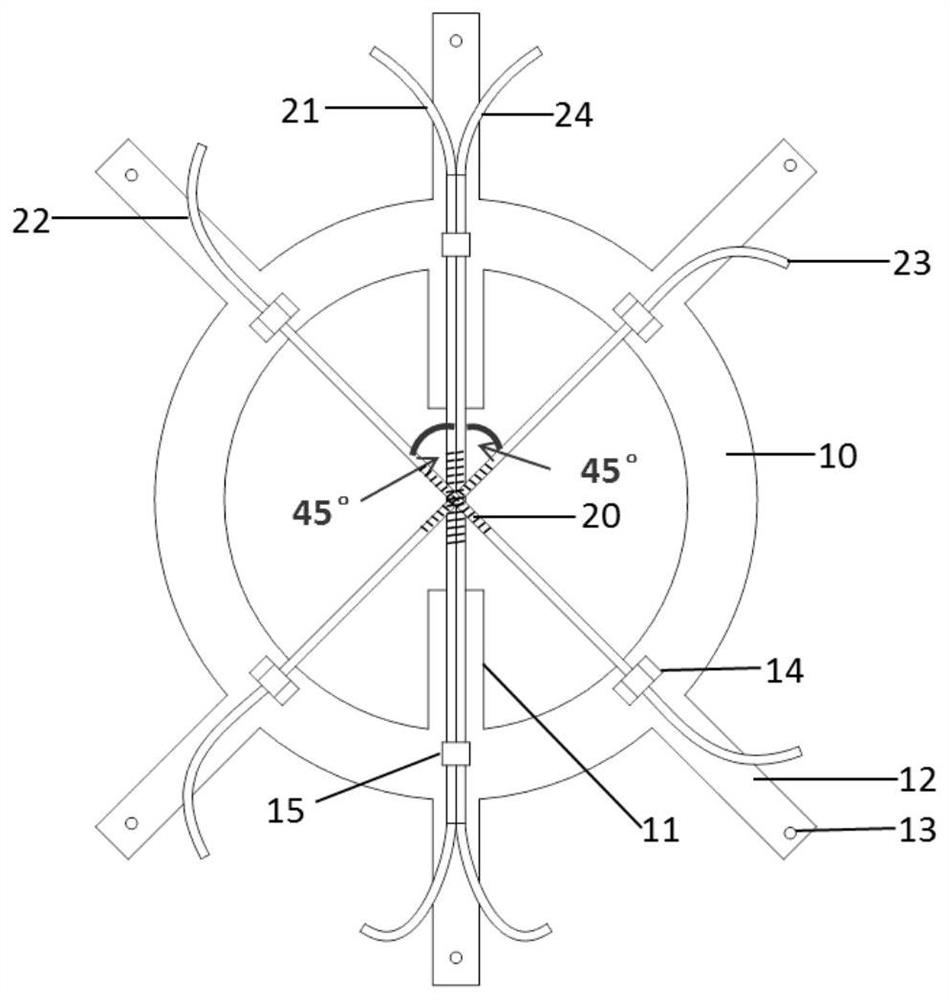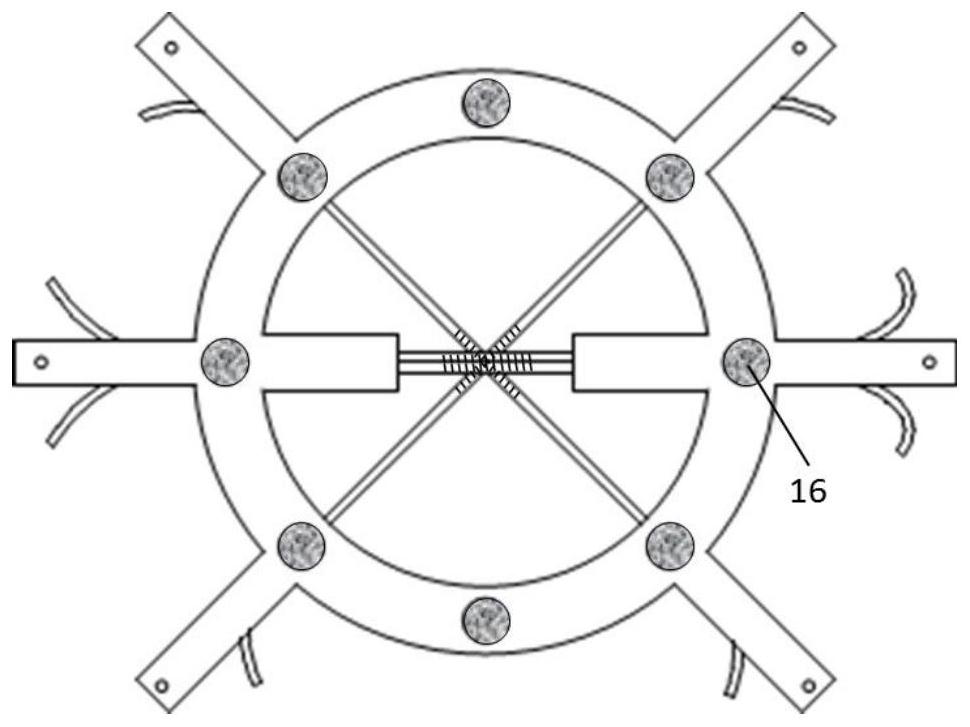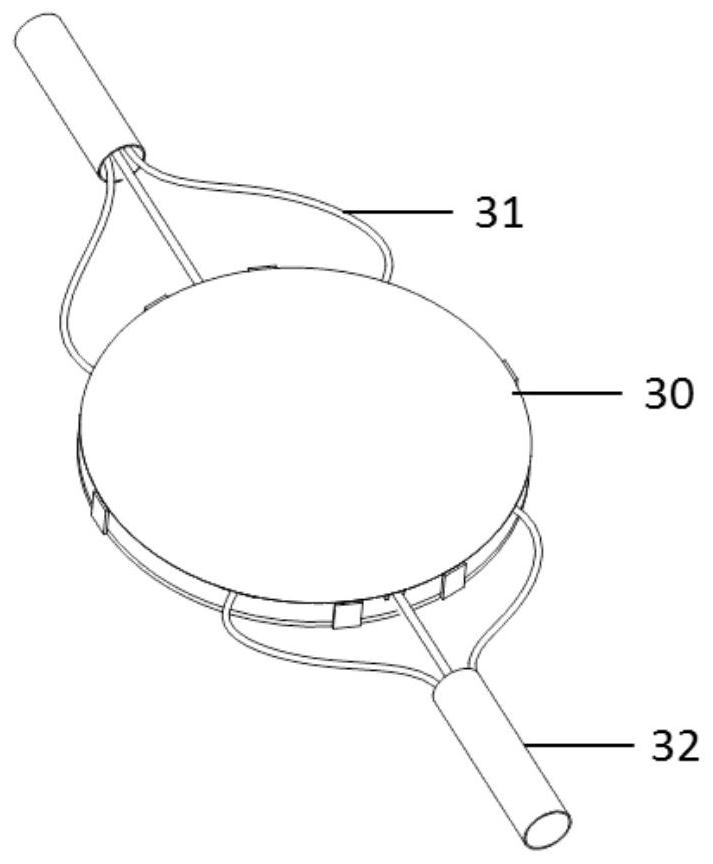A fiber grating high temperature strain gauge and its calibration method
A high-temperature strain gauge and fiber grating technology, which is applied in the direction of using optical devices, instruments, measuring devices, etc., can solve the problem of inability to achieve synchronous measurement of structures, and achieve the effects of avoiding chirp phenomenon, high measurement accuracy and simple structure.
- Summary
- Abstract
- Description
- Claims
- Application Information
AI Technical Summary
Problems solved by technology
Method used
Image
Examples
Embodiment 1
[0031] Example 1 Fiber Bragg Grating High Temperature Strain Gauge
[0032] Refer to the attached image 3 , the fiber grating high-temperature strain gauge of this embodiment includes a circular ring-shaped sensor substrate 10, an optical fiber mounting arm 11, an optical fiber and a protective cover 30 arranged on the sensor substrate 10. The optical fiber mounting arm 11 is along the sensor substrate 10. The inner circumference is formed to extend inward, and the optical fibers are arranged along the diameter direction of the sensor substrate 10 . The fiber mounting arm 11 is in the same plane as the sensor substrate 10 . The size of the protective cover 30 matches the outer diameter of the sensor substrate 10. The edge of the protective cover 30 is evenly spaced with connecting parts. The protective cover 30 is connected with the sensor substrate 10 through the connecting parts to protect the optical fiber. The protective cover 30 is Metal Material.
[0033] The stiffne...
Embodiment 2
[0044] Embodiment 2 Calibration method
[0045] Based on the strain gauge in Example 1, the calibration method in this example is performed according to the following steps:
[0046] 1) Fix the two stretching devices corresponding to both ends of the first optical fiber on the stress sensor calibration platform through the stretching circular hole;
[0047] 2) The tensile displacement is obtained by the tensile displacement method as ΔL i When , the wavelength shift of the first fiber Δλ i , where i=1,2,3,...,n;
[0048] 3) Measure the length L between the two fixed ends of the first fiber, and calculate the strain ε of the strain gauge in the direction of the first fiber i =ΔL i / L(i=1,2,...,n);
[0049] 4) Put several pairs of measurement points (Δλ i , ε i ) for linear fitting, and the slope K of the fitted line 1 is the strain sensitivity of the strain gauge in the direction of the first fiber;
[0050] 5) Repeat steps 1) to 4) for the second optical fiber and the...
PUM
| Property | Measurement | Unit |
|---|---|---|
| thickness | aaaaa | aaaaa |
| height | aaaaa | aaaaa |
| height | aaaaa | aaaaa |
Abstract
Description
Claims
Application Information
 Login to View More
Login to View More - R&D
- Intellectual Property
- Life Sciences
- Materials
- Tech Scout
- Unparalleled Data Quality
- Higher Quality Content
- 60% Fewer Hallucinations
Browse by: Latest US Patents, China's latest patents, Technical Efficacy Thesaurus, Application Domain, Technology Topic, Popular Technical Reports.
© 2025 PatSnap. All rights reserved.Legal|Privacy policy|Modern Slavery Act Transparency Statement|Sitemap|About US| Contact US: help@patsnap.com



